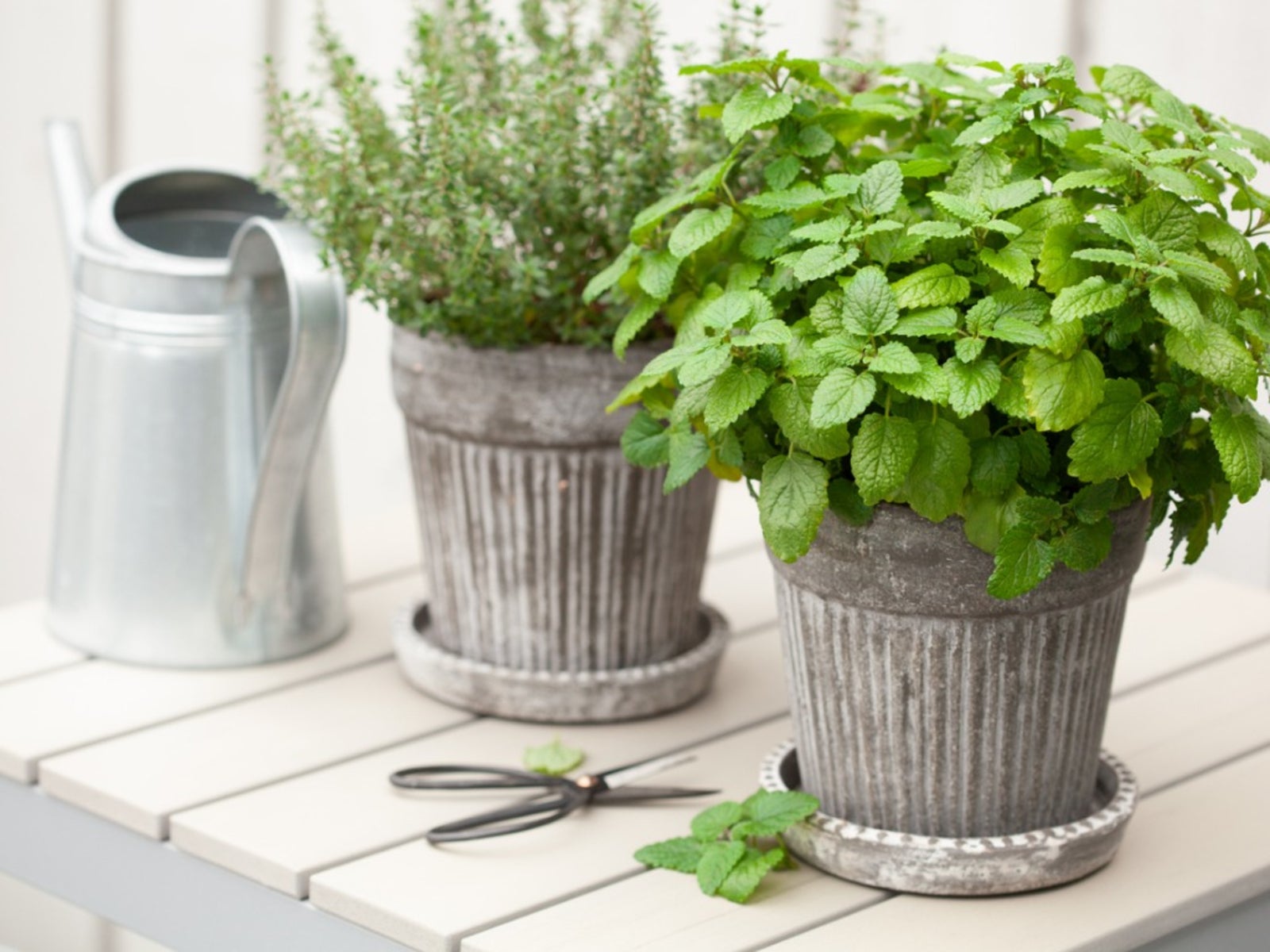Propagation In Your Herb Garden

There are many ways to propagate herbs in your herb garden. Depending on the type of herbal plant that you are trying to grow, you may need to propagate your herbs by planting seeds, splitting the roots, taking cuttings, or using runners (which are shoots that are produced from the root).
Growing Herbs from Seeds
To give your garden a head start, you can grow seedlings in pots on a sunny windowsill about six weeks before the last frost date in your area. Plant the seeds in a good potting soil mix according to package directions. Thin out the seedlings to one per pot by using tweezers to remove any unwanted growth, or snip the weaker seedling at the soil line. After all danger of frost is over, harden off your seedlings by taking them outside for lengthening time periods over the course of two weeks before planting them in their permanent spots in your garden. If you live in a warmer climate that has an extended growing season, you can start your seeds in early spring directly in a sunny spot in your herb garden. Short-lived herbs that are used in large quantities can be sown every three or four weeks from early spring to early autumn to ensure you of having plenty on hand when needed. If you are planning to save seeds from plants that you have grown in your garden, keep in mind that some herbs may cross-pollinate and will produce plants unlike their mother plant. This type of hybridization is very likely if you grow various types of thyme, marjoram, or lavender closely together. If you want to save the seeds from these plants, be sure to keep the relatives far away from each other. Some of the best and most successful herbs to grow from collected seeds are:
Gather your seeds as soon as they have ripened. Store clean seeds in paper envelopes for later use. Never keep your seeds in plastic containers, as it will degrade their quality.
Propagating Herbs by Division
Perennial herbs will need to be divided every few years to keep them from becoming overcrowded. Division should be done in autumn or early spring while growth is minimal. To divide your herbs, carefully dig up the plant, split it in half, and replant the two plants either into the ground or in pots. Be sure to water replanted divided plants carefully to help settle the soil around the root system. Examples of some of the herbs that need to be propagated by division include:
Propagation of Herbs Through Cuttings
One of the most reliable ways to propagate your herbs is by taking cuttings. Always use a clean, sharp pair of gardening shears and insert the cuttings immediately into a mixture of well-drained soil, peat, and sand or vermiculite. Keep the cutting warm and moist while it is rooting. Layering is another form of cutting. In this method, a shoot or stem is induced to form roots while still attached to the mother plant. Choose a strong, but flexible, shoot. Jasmine works well when propagated by layering. Make a small cut in the underside of the shoot and insert it into the ground so that the growing tip is above the surface. Use a heavy object, like a rock, to hold it in place. The following fall, once the stem has taken root, you can cut the new plant away from its mother and replant it into a new location.
Propagating Herbs That Have Runners
Some herbal plants produce rhizomes, or runners. These plants basically propagate themselves as the runners develop their own root system. Simply detach the new plants from the mother plant and relocate them. Herbal mint plants are notorious for producing runners and can become quite invasive if left unchecked for too long. Through careful propagation you will have a garden full of herbs for many years to come.
Sign up for the Gardening Know How newsletter today and receive a free copy of our e-book "How to Grow Delicious Tomatoes".